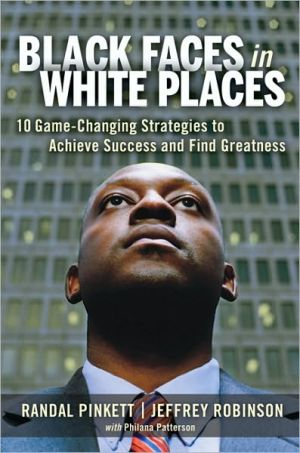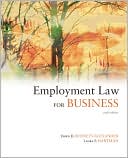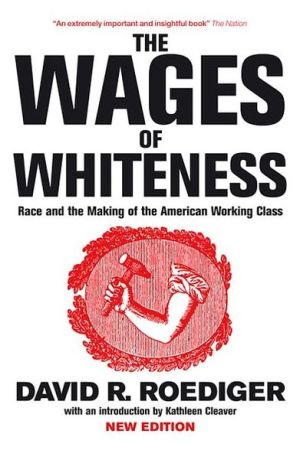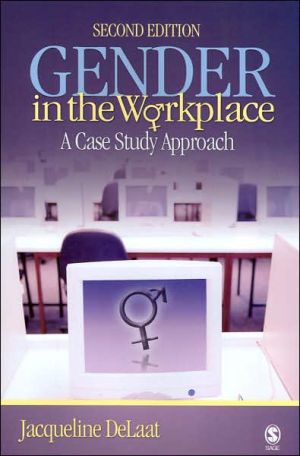Gender Differences at Critical Transitions in the Careers of Science, Engineering, and Mathematics Faculty
Gender Differences at Critical Transitions in the Careers of Science, Engineering, and Mathematics Faculty presents new and surprising findings about career differences between female and male full-time, tenure-track, and tenured faculty in science, engineering, and mathematics at the nation's top research universities. Much of this congressionally mandated book is based on two unique surveys of faculty and departments at major U.S. research universities in six fields: biology, chemistry,...
Search in google:
Gender Differences at Critical Transitions in the Careers of Science, Engineering, and Mathematics Faculty presents new and surprising findings about career differences between female and male full-time, tenure-track, and tenured faculty in science, engineering, and mathematics at the nation's top research universities. Much of this congressionally mandated book is based on two unique surveys of faculty and departments at major U.S. research universities in six fields: biology, chemistry, civil engineering, electrical engineering, mathematics, and physics. A departmental survey collected information on departmental policies, recent tenure and promotion cases, and recent hires in almost 500 departments. A faculty survey gathered information from a stratified, random sample of about 1,800 faculty on demographic characteristics, employment experiences, the allocation of institutional resources such as laboratory space, professional activities, and scholarly productivity. This book paints a timely picture of the status of female faculty at top universities, clarifies whether male and female faculty have similar opportunities to advance and succeed in academia, challenges some commonly held views, and poses several questions still in need of answers. This book will be of special interest to university administrators and faculty, graduate students, policy makers, professional and academic societies, federal funding agencies, and others concerned with the vitality of the U.S. research base and economy.
Summary 11 Introduction 15Why Disparities Matter, 16The Committee's Charge, 19Approach and Scope, 19Outline of Report, 292 Status of Women in Academic Science and Engineering in 2004 and 2005 31Degrees Earned, 32Faculty Representation, 33Professional Activities and Climate, 363 Gender Differences in Academic Hiring 39The Hiring Process, 40Applications for Faculty Positions, 43Selection for Interviews for S&E Jobs, 50Offers Made, 56Hires, 59Faculty Perspective on Hiring, 61Institutional Policies for Increasing the Diversity of Applicant Pools, 61Summary of Findings, 644 Professional Activities, Institutional Resources, Climate, and Outcomes 70Professional Activities, 73Institutional Resources, 77Climate, 84Outcomes, 88Summary of Findings, 1105 Gender Differences in Tenure and Promotion 116Tenure and Promotion Processes, 118Equity in Tenure and Promotion Decisions, 121Tenure and Promotion Awards, 124Time in Rank, 134Summary of Findings, 1486 Key Findings and Recommendations 153Appendixes1-1 Biographical Information on Committee Members, 1711-2 List of Research I Institutions, 1781-3 Committee Meeting Agenda, 1791-4 The Surveys, 1811-5 Survey Instruments, 1891-6 Departments in Survey, 2162-1 Review of Literature and Relevant Research, 2492-2 Previous Research on Factors Contributing to Gender Differences Among Faculty, 2673-1 Review of Literature and Research on Factors Associated with a Higher Proportion of Female Applicants, 2753-2 Estimated Adjusted Mean Effects and Differences for the Probability That There Are No Female Applicants, 2843-3 Estimated Adjusted Mean Effects and Differences Based on the Modeled Probability of the Percentage of Applicants That Are Female, 2853-4 Estimated Adjusted Mean Effects and Differences Based on the Modeled Probability of at Least One Female Candidate Interviewed, 2873-5 Doctoral Degrees Awarded by All Doctoral-Granting Institutions, by Field, Gender, and Year, 2893-6 Doctoral Degrees Awarded by Discipline and Gender for Research I Institutions, 1999-2003, 2903-7 Marginal Mean and Variance of Transformed Response Variables, 2913-8 Main Considerations for Taking a Position by Number of Respondents Saying "Yes", 2954-1 Distribution of Undergraduate Course Load for Faculty by Gender and Discipline, 2964-2 Percentage of Faculty Members Who Do No Graduate Teaching, 2984-3 Percentage of Faculty Members Receiving a Reduced Teaching Load When Hired, 2994-4 Percentage of Faculty Members Who Served on an Undergraduate Thesis or Honors Committee, 3004-5 Percentage of Faculty Members Who Served on and Chaired an Undergraduate Thesis or Honors Committee, 3014-6 Distribution of Number of Graduate Thesis or Honors Committees for Research I Tenure and Tenure-Track Faculty, 3024-7 Percentage of Time Spent in Administration or Committee Work on Campus and Service to the Profession Outside the University for Tenured and Tenure-Track Faculty at Research I Institutions, 3034-8 Distribution of Number of Service Committees for Research I Tenure and Tenure-Track Faculty, 3044-9 Mean Salary by Gender and Professorial Rank for Tenure and Tenure-Track Faculty in Research I Institutions, 3054-10 Percentage of Tenured and Tenure-Track Faculty in Research I Institutions Receiving Summer Support, 3064-11 Percentage of Tenured and Tenure-Track Faculty in Research I Institutions Receiving Travel Funds, 3074-12 Median Square Footage of Lab Space of Faculty Who Report Doing Experimental Work, 3084-13 Faculty Who Have Received More Lab Space Since Hire, 3094-14 Percentage of Tenured and Tenure-Track Faculty in Research I Institutions Receiving Sufficient Equipment, 3104-15 Number of Postdoctorate Students for Tenured and Tenure-Track Faculty in Research I Institutions, 3114-16 Percentage of Tenured and Tenure-Track Faculty in Research I Institutions Receiving Sufficient Clerical Support, 3124-17 Percentage of Faculty Members Stating That They Had a Mentor, 3134-18 Distribution of the Number of Graduate Students for Tenured and Tenure-Track Faculty in Research I Institutions, 3144-19 Mean Number of Articles Published in Refereed Journals Over the Past 3 Years for Tenured and Tenure-Track Faculty in Research I Institutions, 3154-20a Estimated Probability of Having Grant Funding by Discipline, Gender, and Whether the Faculty Member Has an Assigned Mentor Assistant Professors Only, 3164-20b Estimated Probability of Having Grant Funding by Discipline, Gender, and Whether the Faculty Member Has an Assigned Mentor Associate Professors Only, 3174-21 Percentage Faculty Missing Salary Data by Gender and Discipline, 3184-22 Percentage of Tenured and Tenure-Track Faculty at Research I Institutions That Were Nominated for at Least One Award, 3194-23 Percentage of Tenured and Tenure-Track Research I Faculty with Offers to Leave, 3204-24 Percentage of Tenured and Tenure-Track Faculty at Research I Institutions Planning to Leave or Retire, 3215-1 Knowledge of Tenure Procedures by Gender, Rank, and Presence of a Mentor, 3225-2 Detailed Tenure Information from Departmental Survey, 3245-3 Time Spent hi Both Assistant and Associate Professorships, 3255-4 Years Between Starting Employment and Achieving Associate Professor Status, by Gender, 3265-5 Years Between Starting Employment and Achieving Full Professor Status, by Gender, 3275-6 Patterns of Nonresponse for Tenure Decisions, 3285-7 Patterns of Nonresponse for Promotion Decisions, 329Bibliography 330Index 353








